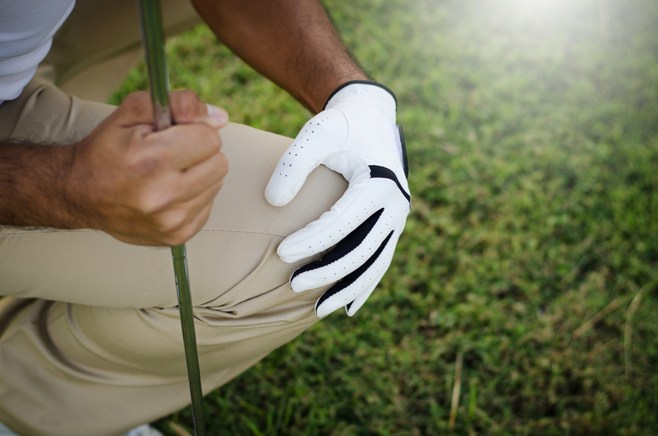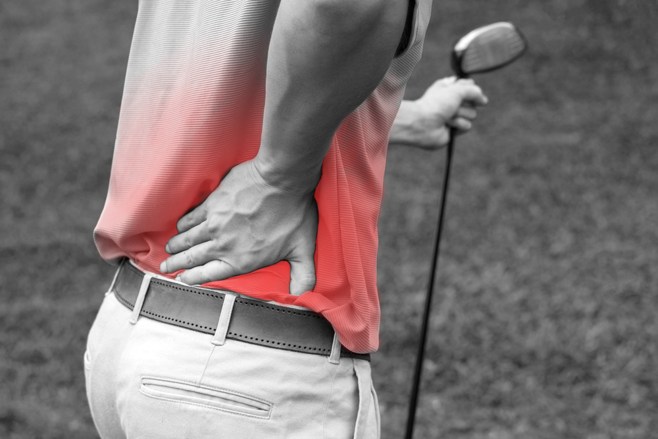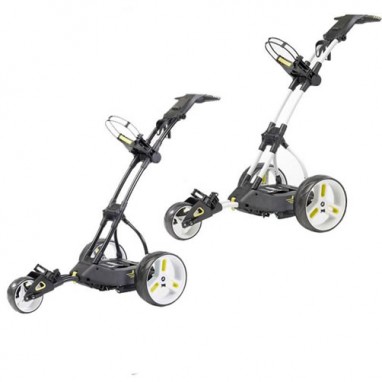Kit to Help Rehabilitate a Golf Injury
It was touch and go as to whether Tiger Woods would play The Masters last week thanks to his well-publicised back injury (amongst others) that has been plaguing both him and his performance. But while his dilemmas may be in the spotlight, golfing injuries are not relegated to the high and mighty. We are all familiar with aches and pains that can either be caused or aggravated by our love of the game. Most commonly occurring are back, knee and shoulder pain, and while your first port of call should always be a doctor or physio, there are a few investments we can make to help take some of the pressure off. We asked Golfsupport Pro Alex Etches (@tigerironsalex) to choose his top equipment recommendations for common injuries, while international personal trainer James Schofield (@talifestyleuk) gives his exercise tips to help support rehabilitation…
Back pain.
Alex says: back pain, particularly lower back pain can not only be painful, but it can also affect your swing, so for any keen golfer it’s not something that you want to aggravate. Little things can make all the difference, which is why the Ball Butler is a simple but effective trick to have up your sleeve. Fitting to the end of your putter it has a suction mechanism to pick your golf ball out of the hole without the need to bend down. It might be small, but see how much of a difference it makes after 10 holes!
James says: lower back pain is often caused simply by our 20th century lifestyles; working at a desk, slouching on the sofa and sitting in a car. Being seated all day actually means that your hip flexor muscles and hamstrings shorten, which worsens the problem of pressure on your pelvis and helps contribute to the back pain. Simply, you need to walk more often (good news for the golf course). If you're sitting at your desk all day, make sure you get up frequently to move. Stretching the hamstrings, hip flexors and glutes will also help to relieve back pain and keep you more mobile.
Knee pain

Photo credit: DANAI KHAMPIRANON/Shutterstock
Alex says: knee pain is an extremely common complaint, but while many of us get it for lots of different reasons, the wrong golfing technique can be a cause, while over swinging can also cause lower back pain. So if you’re new to golf or have had problems with joint pain, tuition is often a good idea to keep that performance in check and iron out any bad habits.
James says: knee pain for the majority of people can be alleviated by using a few stretches and basic strengthening exercises. Firstly, stretch the quads and hamstrings, and foam roll the Illiotic band. This will bring immediate relief. A hip flexor and glute stretch is useful for opening up around the ITB.
Next, work on strengthening the quadriceps with a simple chair squat. Place a chair about a foot behind you and by putting your weight through your heels, push your hips back and sit down onto the chair. Return to standing by driving your heels through the floor. Quadriceps strength takes a lot of pressure off the knee and gives it support.
Shoulder pain
Alex says: shoulder pain is often deemed somewhat unavoidable thanks to heavy bags and the very nature of the golf game. Inextricably linked to back pain, it’s something that clubs are ever increasingly aware of and now many junior pros are not allowed to carry bags around courses until they are over 18 because of the growth in back and shoulder problems. For this reason electric trolleys have seen their popularity skyrocket amongst players and are a very easy solution, if not to the shoulder pain itself, to one element that’s highly likely to exacerbate it!
James says: Shoulder pain (when no injury has occurred) is often caused by weakness and instability in the shoulder area and excessive internal rotation. Therefore, a simple dumbbell exercise called an external rotation will help to strengthen the muscles holding the shoulder in place. Two simple mobility drills performed daily will loosen up tight chest muscles and give relief to the shoulder. Try doing a chest stretch using a doorway, and a thoracic extension on a foam roller.
Find the trolley to suit you!
If you require more information be sure to check out James (@talifestyleuk) training website http://www.jamesschofieldtraining.co.uk Or Golf related questions call Golfsupport on 08443246766 or Alex (@tigerironsalex)
Feature image credit: sattahipbeach/Shutterstock










